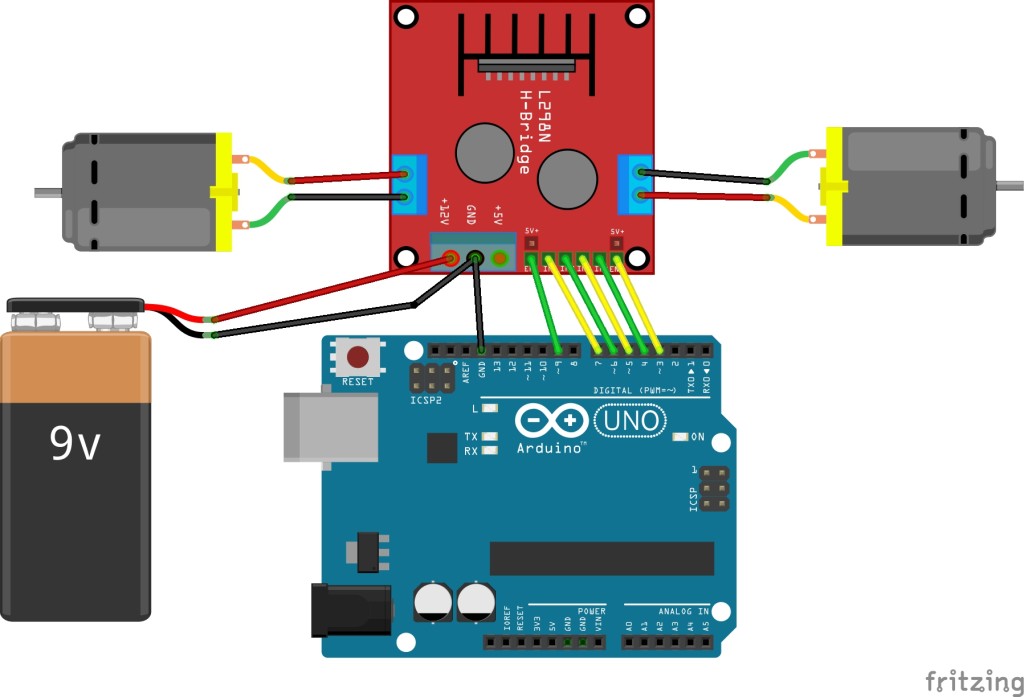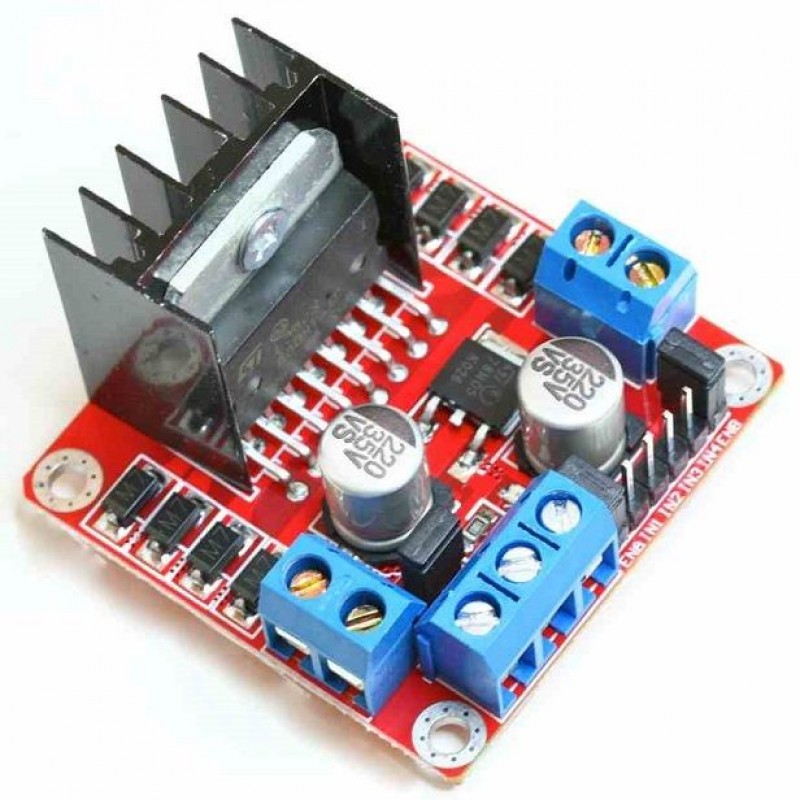

In the (1.5-2ms) period the motor will be rotated clockwise (CW) and the longer the pulse width the faster the motor rotation will be. In the (1-1.5ms) period the motor will be rotated counter-clockwise (CCW) and the shorter the pulse width the faster the motor rotation will be.
#L298N MOTOR DRIVER SERVO MOTOR ARDUINO FULL#
If the pulse width is 2ms or more, less, the servo motor will be rotated at its full speed clockwise (CW).If the pulse width is 1ms or less, the servo motor will be rotated at its full speed counter-clockwise (CCW).If the pulse width is 1.5ms, the servo motor will stop rotating.These cases will show you the relationship between the speed and the rotation direction with the pulse width: This motor rotates continuously, so the pulse width will be used to control the speed and the direction rotation of the motor which is between ( 1-2ms) for the FS90R module, and you can also take a look at the specification of your modules, maybe the values it will be different. Continuous Rotation Servo Motor Working – Timing Diagram The continuous rotation servo motor used the same PWM signal that was used in the conventional but the motor will be worked in a different way. You can control the motor position at any angle you want between (0-180 degrees) by adjusting the pulse width which is between ( 1-2ms). If the pulse width is 2ms or more, less, the servo motor will be rotated to (180 degrees).If the pulse width is 1ms or less, the servo motor will be rotated to (0 degrees).If the pulse width is 1.5ms, the servo motor will be rotated to (90 degrees).


These cases will show you the relationship between the position (angle) and the pulse width: The position (angle) of the servo motor will be determined by the width of the pulse which is between (1-2ms) for the SG90 module which we will use in this tutorial, but always take a look at the specification of your modules, maybe the values it will be different. Conventional Servo Motor Working – Timing Diagram The conventional servo motor used a PWM signal at (20ms) to control the motor, this signal should be (50Hz). Continuous Rotation Servo Motor (FS90R as an example).Conventional Servo Motor (SG90 as an example).

The Hobbyist servo motors are primarily DC motors that can be controlled by analog and digital signals, and there are 2 types of them that are commonly used with Arduino applications, which we will talk about them in detail: Servo motors are used in industrial and hobbyist applications, industrial servo motors are usually AC motors but we won’t talk about them today. The servo motor mainly uses an input control signal to adjust the shaft of the motor. The control unit will adjust the motor position to the targeted position by responding to the error that comes from the potentiometer, this mechanism is called servomechanism. The control unit has an error amplifier which is used to compare the targeted motor position to their actual position from the feedback that came from the potentiometer. There is a DC motor Inside the servo motor, and the output shaft is connected the this DC motor through the gears, the output shaft is used to drive the servo horn which is also connected to a potentiometer, both the DC motor and the potentiometer are connected with a control unit. How Servo Motor Is Connected To Arduino?Ī servo motor is a precise type of motor that controls the movement into a specific position, this motor has a built-in motor driver, so it is work as a closed-loop system to control the speed and the direction in a very accurate way by using the negative feedback from this system.How Much Voltage Does A Servo Motor Need?.Frequently Asked Questions About Servo Motor.Interfacing Servo Motor With Arduino With Potentiometer.Continuous Rotation Servo Motor (FS90R).


 0 kommentar(er)
0 kommentar(er)
